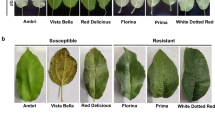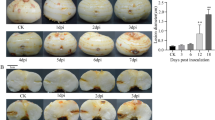Abstract
Turmeric (Curcuma longa L), one of the widely used spices and herbal medicines, is rich in biologically active compound curcumin. Efficacy of curcumin in treating various diseases has been established through over 1000 published in vivo and in vitro studies. Curcumin content is reported to vary between accessions and subject to agro-climatic conditions, and the reasons are unexplored. Gaining an understanding on the molecular mechanism underlying curcumin biosynthesis will help in improving its content and maintaining stability under all conditions of cultivation. To investigate the genes involved in curcuminoid biosynthesis, we used Illumina sequencing platform and generated a substantial amount of expressed sequence tag (EST) dataset from two species viz., C. longa and its wild relative Curcuma aromatica Salisb. contrasting in curcumin content. The data reads of Illumina sequencing have been deposited in the National Center for Biotechnology Information Sequence Read Archive under BioProject ID PRJNA270561 and PRJNA277549 for C. longa and C. aromatica, respectively. De novo assembly produced a total of 99,482 and 104,514 contigs with an average length of 367 and 359 bp for C. longa and C. aromatica, respectively. The transcripts were assembled by BLAST similarity searches and annotated with Gene Ontology (GO) and Kyoto Encyclopedia of Genes and Genomes (KEGG) orthology identifiers. Bioinformatics analysis using BLASTX revealed that both the transcriptomes contained all the ten genes putatively involved in curcuminoid biosynthesis. Two novel polyketide synthase genes showing similarity to that of Musa accuminata (clpks1 and clpks2) were found to be upregulated in C. longa in comparison with C. aromatica. Transcription factors with putative roles in phenylpropanoid biosynthetic pathway were also reported for the first time in Curcuma spp. We also identified 5488 and 5620 putative simple sequence repeats (SSRs) for C. longa and C. aromatica, respectively. By using the assemblies as reference, 190 single-nucleotide polymorphisms (SNPs) for C. longa and 108 SNPs for C. aromatica in the candidate genes of curcuminoid biosynthetic pathway were identified. We could also detect 68 and 64 transcripts as microRNA (miRNA) targets from C. longa and C. aromatica, respectively. This study generated an extensive transcriptome data of C. longa and C. aromatica using deep sequencing. The candidate genes for enzymes involved in curcuminoid biosynthesis were identified from both the species. Differentially expressed genes, novel polyketide synthases, transcription factors, SSRs, SNPs and miRNA targets were identified from the transcriptomes. These EST sequences are a valuable public information platform for functional studies in turmeric and form a rich resource for studies on marker development and turmeric breeding.







Similar content being viewed by others
References
Abel C, Clauss M, Schaub A et al (2009) Floral and insect-induced volatile formation in Arabidopsis lyrata ssp. petraea, a perennial, outcrossing relative of A. thaliana. Planta 230:1–11. doi:10.1007/s00425-009-0921-7
Allen E, Xie Z, Gustafson AM, Carrington JC (2005) microRNA-directed phasing during trans-acting siRNA biogenesis in plants. Cell 121(2):207–221
Anandaraj M, Prasath D, Kandiannan K et al (2014) Genotype by environment interaction effects on yield and curcumin in turmeric (Curcuma longa L.). Ind Crop Prod 53:358–364. doi:10.1016/j.indcrop.2014.01.005
Annadurai RS, Neethiraj R, Jayakumar V et al (2013) De Novo transcriptome assembly (NGS) of Curcuma longa L. rhizome reveals novel transcripts related to anticancer and antimalarial terpenoids. PLoS ONE 8:e56217. doi:10.1371/journal.pone.0056217
Broun P (2004) Transcription factors as tools for metabolic engineering in plants. Curr Opin Plant Biol 7:202–209. doi:10.1016/j.pbi.2004.01.013
Deepa K, Sheeja TE, Santhi R, Sasikumar B, Cyriac A, Deepesh PV, Prasath D (2014) A simple and efficient protocol for isolation of high quality functional RNA from different tissues of turmeric (Curcuma longa L.). Physiol Mol Biol Plants 20:263–271
del Ramirez-Ahumada MC, Timmermann BN, Gang DR (2006) Biosynthesis of curcuminoids and gingerols in turmeric (Curcuma longa) and ginger (Zingiber officinale): identification of curcuminoid synthase and hydroxycinnamoyl-CoA thioesterases. Phytochemistry 67:2017–2029. doi:10.1016/j.phytochem.2006.06.028
Elizabeth T, Zachariah JT, Syamkumar S, Sasikumar B (2011) Curcuminoid profiling of Indian turmeric. Int J Med Arom Plants 33(1):36–40, http://220.227.138.214:8080/dspace/handle/123456789/676
Ferreira de Carvalho J, Poulain J, Da Silva C et al (2013) Transcriptome de novo assembly from next-generation sequencing and comparative analyses in the hexaploid salt marsh species Spartina maritima and Spartina alterniflora (Poaceae). Heredity (Edinb) 110:181–193. doi:10.1038/hdy.2012.76
Garg R, Patel RK, Jhanwar S et al (2011) Gene discovery and tissue-specific transcriptome analysis in chickpea with massively parallel pyrosequencing and web resource development. Plant Physiol 156:1661–1678. doi:10.1104/pp. 111.178616
Ghawana S, Paul A, Kumar H et al (2011) An RNA isolation system for plant tissues rich in secondary metabolites. BMC Res Notes 4:85. doi:10.1186/1756-0500-4-85
Huang H-H, Xu L-L, Tong Z-K et al (2012a) De novo characterization of the Chinese fir (Cunninghamia lanceolata) transcriptome and analysis of candidate genes involved in cellulose and lignin biosynthesis. BMC Genomics 13:648. doi:10.1186/1471-2164-13-648
Huang W, Sun W, Lv H et al (2012b) Isolation and molecular characterization of thirteen R2R3-MYB transcription factors from Epimedium sagittatum. Int J Mol Sci 14:594–610. doi:10.3390/ijms14010594
Hyun TK, Rim Y, Jang H-J et al (2012) De novo transcriptome sequencing of Momordica cochinchinensis to identify genes involved in the carotenoid biosynthesis. Plant Mol Biol 79:413–427. doi:10.1007/s11103-012-9919-9
Iorizzo M, Senalik DA, Grzebelus D et al (2011) De novo assembly and characterization of the carrot transcriptome reveals novel genes, new markers, and genetic diversity. BMC Genomics 12:389. doi:10.1186/1471-2164-12-389
Jin H, Cominelli E, Bailey P et al (2000) Transcriptional repression by AtMYB4 controls production of UV-protecting sunscreens in Arabidopsis. EMBO J 19:6150–6161. doi:10.1093/emboj/19.22.6150
Jitsaeng K (2009) Phytochemical and molecular studies on Musa plants and related species. Dissertation, The Friedrich Schiller University Jena. (http://www.clib-jena.mpg.de/theses/ice/ICE09004.pdf)
Kalra S, Puniya BL, Kulshreshtha D et al (2013) De novo transcriptome sequencing reveals important molecular networks and metabolic pathways of the plant, Chlorophytum borivilianum. PLoS ONE 8:e83336. doi:10.1371/journal.pone.0083336
Katsuyama Y, Matsuzawa M, Funa N, Horinouchi S (2007) In vitro synthesis of curcuminoids by type III polyketide synthase from Oryza sativa. J Biol Chem 282:37702–37709. doi:10.1074/jbc.M707569200
Katsuyama Y, Kita T, Funa N, Horinouchi S (2009a) Curcuminoid biosynthesis by two type III polyketide synthases in the herb Curcuma longa. J Biol Chem 284:11160–11170. doi:10.1074/jbc.M900070200
Katsuyama Y, Kita T, Horinouchi S (2009b) Identification and characterization of multiple curcumin synthases from the herb Curcuma longa. FEBS Lett 583:2799–2803. doi:10.1016/j.febslet.2009.07.029
Kita T, Imai S, Sawada H, Kumagai H, Seto H (2008) The biosynthetic pathway of curcuminoid in turmeric (Curcuma longa) as revealed by 13C-labeled precursors. Biosci Biotechnol Biochem 72(7):1789–1798
Koo HJ, McDowell ET, Ma X, Greer KA, Kapteyn J, Xie Z, Descour A, Kim H, Yu Y, Kudrna D, Wing RA, Soderlund CA, Gang DR (2013) Ginger and turmeric expressed sequence tags identify signature genes for rhizome identity and development and the biosynthesis of curcuminoids, gingerols and terpenoids. BMC Plant Biol 13:27
Krup V, Prakash HL, Harini A (2013) Pharmacological activities of turmeric (Curcuma longa linn): a review. J Homeop Ayurv Med 2:133. doi:10.4172/2167-1206.1000133, http://omicsgroup.org/journals/pharmacological-activities-of-turmeric-curcuma-longa-linn-a-review-2167-1206.1000133.pdf
La Rota M, Kantety RV, Yu J-K, Sorrells ME (2005) Non random distribution and frequencies of genomic and EST-derived microsatellite markers in rice, wheat, and barley. BMC Genomics 6:23
Liu PP, Montgomery TA, Fahlgren N, Kasschau KD, Nonogaki H, Carrington JC (2007) Repression of AUXIN RESPONSE FACTOR10 by microRNA160 is critical for seed germination and post-germination stages. Plant J 52(1):133–146. doi:10.1111/j.1365-313X.2007.03218.x/abstract
Livak KJ, Schmittgen TD (2001) Analysis of relative gene expression data using real-time quantitative PCR and the 2(-Delta Delta C(T)) method. Methods 25:402–408. doi:10.1006/meth.2001.1262
Logacheva MD, Kasianov AS, Vinogradov DV et al (2011) De novo sequencing and characterization of floral transcriptome in two species of buckwheat (Fagopyrum). BMC Genomics 12:30. doi:10.1186/1471-2164-12-30
Nguyen CM, Nguyen TN, Choi GJ et al (2014) Acid hydrolysis of Curcuma longa residue for ethanol and lactic acid fermentation. Bioresour Technol 151:227–235. doi:10.1016/j.biortech.2013.10.039
Omer S, Kumar S, Khan BM (2013) Over-expression of a subgroup 4 R2R3 type MYB transcription factor gene from Leucaena leucocephala reduces lignin content in transgenic tobacco. Plant Cell Rep 32:161–171. doi:10.1007/s00299-012-1350-9
Ong SS, Wickneswari R (2011) Expression profile of small RNAs in Acacia mangium secondary xylem tissue with contrasting lignin content—potential regulatory sequences in monolignol biosynthetic pathway. BMC Genomics 12(Suppl 3):S13
Prasad S, Aggarwal BB (2011) Turmeric, the golden spice: from traditional medicine to modern medicine. In: Benzie IFF, Wachtel-Galor S (eds) Herbal medicine: biomolecular and clinical aspects, 2nd edn. CRC Press, USA, http://www.ncbi.nlm.nih.gov/books/NBK92752/
Sajitha PK, Prasath D, Sasikumar B (2014) Phenological variation in two species of Curcuma. J Plant Crop 42(2):252–255, http://220.227.138.214:8080/dspace/handle/123456789/1196
Santhi R, Sheeja TE (2013) Deep sequencing identifies candidate miRNAs from turmeric with possible regulatory roles on plant and human genes. In: Sasikumar B, Dinesh R, Prasath D, Biju CN, Srinivasan V (eds) Proceedings of the National Symposium on Spices and Aromatic Crops (SYMSAC VII): post-harvest processing of spices and fruit crops. Indian Society for spices, Indian Institute of Spices Research, Kozhikode, p 210, http://www.indianspicesociety.in/iss/pdf/SYMSAC%20VII%20-%20Souvenir.pdf
Sasikumar B (2005) Genetic resources of Curcuma: diversity, characterization and utilization. Plant Genet Resour Charact Util 3:230–251. doi:10.1079/PGR200574
Schröder J (1997) A family of plant-specific polyketide synthases: facts and predictions. Trends Plant Sci 2:373–378. doi:10.1016/S1360-1385(97)87121-X
Schwab R, Palatnik JF, Riester M, Schommer C, Schmid M, Weigel D (2005) Specific effects of microRNAs on the plant transcriptome. Dev Cell 8(4):517–527
Singh S, Joshi RK, Nayak S (2013) Identification of elite genotypes of turmeric through agroclimatic zone based evaluation of important drug yielding traits. Ind Crop Prod 43:165–171
Smith HG (1899) On the crystalline camphor of eucalyptus oil (eudesmol), and the natural formation of eucalyptol. J Proc R Soc NSW 33:86–107, http://www.forgottenbooks.com/readbook_text/Journal_and_Proceedings_of_the_Royal_Society_of_New_South_Wales_1000770596/457
Tao X, Fang Y, Xiao Y et al (2013) Comparative transcriptome analysis to investigate the high starch accumulation of duckweed (Landoltia punctata) under nutrient starvation. Biotechnol Biofuels 6:72. doi:10.1186/1754-6834-6-72
Tiwari SB, Hagen G, Guilfoyle T (2003) The roles of auxin response factor domains in auxin-responsive transcription. Plant Cell 15(2):533–543
Vaidya K, Ghosh A, Kumar V et al (2013) De novo transcriptome sequencing in Trigonella foenumgraceum L. to identify genes involved in the biosynthesis of diosgenin. Plant Genome. doi:10.3835/plantgenome2012.08.0021, https://www.agronomy.org/files/publications/tpg/tpg12-08-0021.pdf
Wenping H, Yuan Z, Jie S et al (2011) De novo transcriptome sequencing in Salvia miltiorrhiza to identify genes involved in the biosynthesis of active ingredients. Genomics 98:272–279. doi:10.1016/j.ygeno.2011.03.012
Wu G, Park MY, Conway SR, Wang JW, Weigel D, Poethig RS (2009) The sequential action of miR156 and miR172 regulates developmental timing in Arabidopsis. Cell 138(4):750–759
Yang C-Q, Fang X, Wu X-M et al (2012) Transcriptional regulation of plant secondary metabolism. J Integr Plant Biol 54:703–712. doi:10.1111/j.1744-7909.2012.01161.x
Yu F, Harada H, Yamasaki K et al (2008) Isolation and functional characterization of a β-eudesmol synthase, a new sesquiterpene synthase from Zingiber zerumbet Smith. FEBS Lett 582:565–572. doi:10.1016/j.febslet.2008.01.020
Zhou Y, Gao F, Liu R et al (2012) De novo sequencing and analysis of root transcriptome using 454 pyrosequencing to discover putative genes associated with drought tolerance in Ammopiptanthus mongolicus. BMC Genomics 13:266. doi:10.1186/1471-2164-13-266
Acknowledgments
This work is partly supported by the Department of Biotechnology (DBT), New Delhi. The authors are grateful to Director, Indian Institute of Spices Research, for providing the facilities. The authors also thank Distributed Information Sub-Centre (DISC), Indian Institute of Spices Research, Kozhikode, for providing the support in sequence analysis and sequence deposition in NCBI.
Author information
Authors and Affiliations
Corresponding author
Additional information
T. E. Sheeja holds a Ph.D. degree, Indian Institute of Spices Research.
K. Deepa holds a M. Sc degree, Indian Institute of Spices Research.
R. Santhi holds a M. Sc degree, Indian Institute of Spices Research.
B. Sasikumar holds a Ph.D. degree, Indian Institute of Spices Research.
Rights and permissions
About this article
Cite this article
Sheeja, T.E., Deepa, K., Santhi, R. et al. Comparative Transcriptome Analysis of Two Species of Curcuma Contrasting in a High-Value Compound Curcumin: Insights into Genetic Basis and Regulation of Biosynthesis. Plant Mol Biol Rep 33, 1825–1836 (2015). https://doi.org/10.1007/s11105-015-0878-6
Published:
Issue Date:
DOI: https://doi.org/10.1007/s11105-015-0878-6




